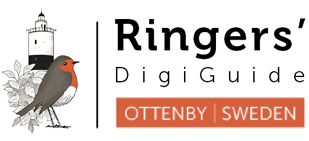

Bluethroat
AGE – BEST CRITERIA:
Since the pre-br moult is rather restricted, the characters used during autumn are still valid. Pattern and moult status of GC is generally easy to assess. In 2cy, a moult contrast is present among inner GC. However, quite many birds of both age classes show a surprisingly fresh innermost GC9-10 (which may be mistaken for pre-br feather), probably best explained by its more protected position. Note that the general wear is highly variable within both age categories of this species, making PP and RR difficult to use for ageing.
2cy:
3cy+:
More Luscinia svecica:
Ringers’ DigiGuide is sponsored by:
Hemsidan producerad i samarbete med
BirdLife Sverige